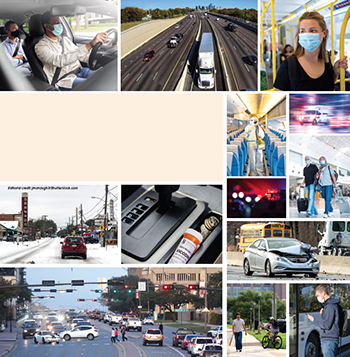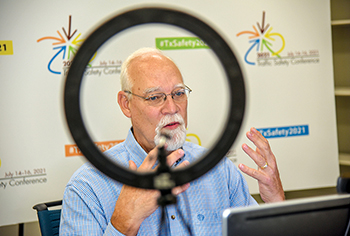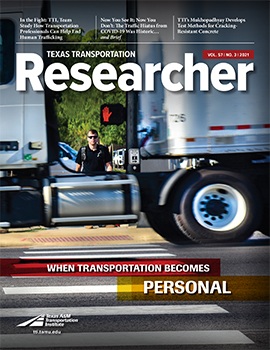
For the second year in a row, the Texas A&M Transportation Institute (TTI) hosted the virtual Traffic Safety Conference, held July 14–16, 2021. Supported by the Texas Department of Transportation (TxDOT), the event focused on high-priority safety issues and innovative solutions to end the streak of daily fatal crashes in Texas. This year’s conference also included discussions and research on how COVID-19 has impacted transportation safety. More than 580 individuals attended.
“We’re so excited for you to be here but regret that we’re still virtual,” said Robert Wunderlich, director of TTI’s Center for Transportation Safety, as he opened the conference. “On the other hand, this year’s [format] allowed many attendees and speakers who wouldn’t typically be able to join us in person to participate.”
In his keynote address July 15, Nanda Srinivasan, National Highway Traffic Safety Administration associate administrator for research and program development, discussed alarming trends in traffic safety nationally during the COVID-19 pandemic. “One of the main reasons I’m concerned about traffic safety this year is the increase in fatality rates we observed last year,” Srinivasan said. “We can say that what happened last year was highly influenced by COVID-19. I say this not just because I see differences [in] … fatality rates in traffic safety but [because] I’ve also seen an alarming increase in various other areas such as drug overdose deaths and suicides.”
Wunderlich expanded on Srinivasan’s keynote to offer insights related to COVID-19’s influence on traffic fatalities in Texas. “Although crash data from April 2020 suggest the number of total traffic crashes decreased by 47 percent,” he noted, “fatal crashes in that same period were only down 20 percent. This means the proportion of all crashes that were fatal went up 1.5 times compared to the previous three-year average.”

Other sessions over the three-day conference supported the goal to reduce traffic fatalities and included discussions of increasing stakeholder engagement in the Texas Strategic Highway Safety Plan, using data innovations, and tailoring employer driver and transportation training programs. A team comprised of five TTI speakers — including Associate Research Engineer Luke Albert, Senior Research Engineer Jim Cline, Assistant Research Scientist Subasish Das, Associate Research Engineer Minh Le and Assistant Research Scientist Michael Martin — presented alternative data sources being used to diagnose and address traffic safety problems on Texas roadways. Focusing primarily on connected vehicle data, the team explained how such a method — in concert with traditional traffic safety information and local engineering judgment — can provide a data-driven basis for tough decisions and prioritization of improvement projects.
TxDOT Director of Engineering and Safety Operations C. Michael Lee’s July 16 keynote address focused on TxDOT’s zero deaths goal. “Our biggest problem in 2021 is our [traffic] fatalities… And sadly, we haven’t gone a single day without a fatality on Texas roads in over 20 years,” Lee said. “We need to change the norm, and we need to change the expectation. The expectation should be [that] when you’re traveling on our transportation system, you’re going to get where you’re going. And if that doesn’t happen, something went terribly wrong.”
Anecdotal accounts suggest the 2021 Traffic Safety Conference — now in its 12th year — was a resounding success. A strong social media campaign advertising the event ahead of time, along with conveniences like online attendance (requiring no travel or the associated expenses) and access to webinars after the fact, helped attract hundreds of conference participants. Surveys were sent out to determine attendees’ satisfaction with the conference and identify improvements for next year’s conference.
